Introduction:
Tornadoes. The word conjures images of swirling devastation, howling winds ripping buildings from their foundations, and tossing debris like deadly toys. These monstrous funnels of fury, born from the very heart of thunderstorms, carve a path of destruction across landscapes in a terrifying display of raw power.
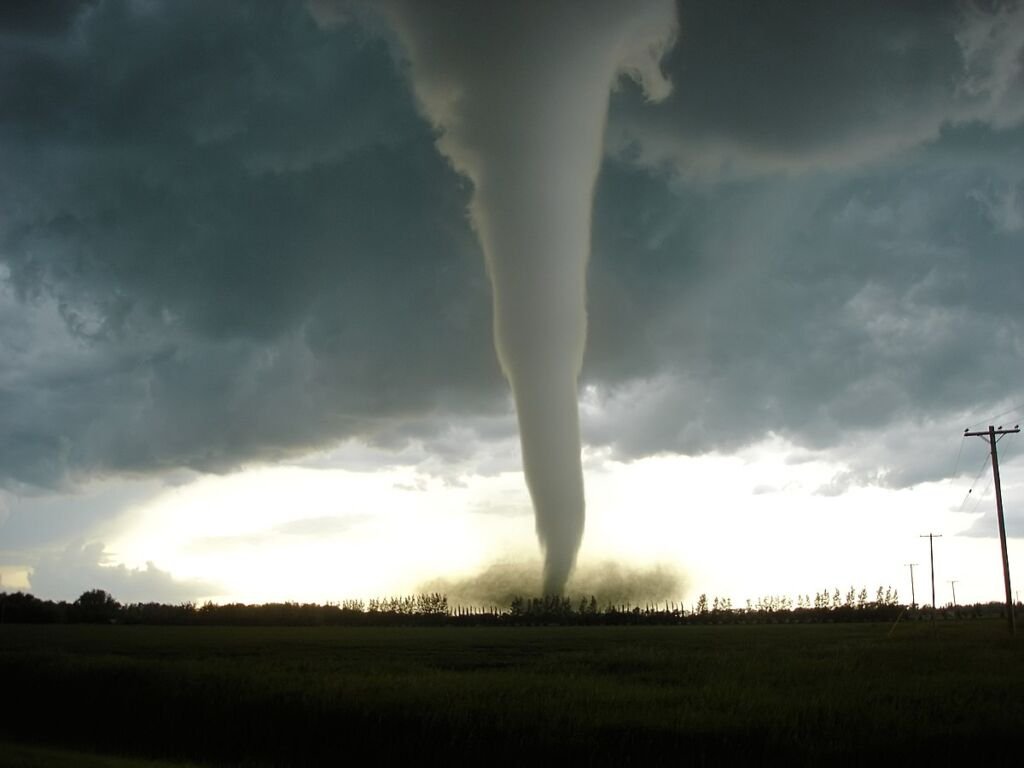
Tornadoes are a chilling reminder of nature’s untamed might. They can strike suddenly, leaving behind a trail of shattered lives and communities. Understanding tornadoes – their behavior, impact, and how we can prepare for them – is crucial for protecting ourselves from this terrifying threat. By unraveling the mysteries of these swirling storms, we gain a much-needed edge in the face of nature’s destructive fury.
Etymology:
The word “tornado” has an intriguing origin. It’s derived from the Spanish “tronada” (thunderstorm), which itself likely comes from the Latin “tonare” (to thunder). Interestingly, the Spanish word “tornar” means “to twist” or “to turn,” highlighting the rotating nature of these storms.
Conditions for the Formation of Tornadoes:
Atmospheric Instability: An unstable atmosphere is the foundation for the formation of tornadoes. Warm, moist air near the surface must be capped by cooler air higher up, creating an environment where air parcels can rise rapidly.
Wind Shear: Differing wind speeds and directions at varying altitudes create horizontal rotation in the atmosphere. This wind shear is essential for the initial stage of tornado development.
Supercell Thunderstorms: While instability and wind shear set the stage, most tornadoes form within supercell thunderstorms. These massive, long-lived storms possess a persistent rotating updraft called a mesocyclone, which is crucial in the formation of tornadoes.
Triggering Mechanism: Even with the right ingredients, there needs to be a spark to get things going. This could be a cold front, a dryline, or another weather boundary that lifts the rotating air vertically. This lift is essential in the formation of tornadoes.
Intensification: The final stage in the formation of tornadoes involves the tightening and intensification of the rotating column of air. As it narrows, it spins faster and can extend to the ground, resulting in a destructive tornado.
How are Tornadoes formed?
Tornadoes, those monstrous spinning columns of air, display nature’s power breathtakingly. Understanding the formation of tornadoes allows us to predict them better and prepare for their potential wrath.
Stage 1: Setting the Stage for Upward Mobility
The formation of tornadoes begins with an unstable atmosphere. Intense sunlight heats the ground, warming the air near the surface. Lighter than its surroundings, this warm air rises like buoyant bubbles. As these bubbles, called thermals, ascend, they encounter cooler air at higher altitudes. This temperature difference creates a crucial ingredient for tornado formation – instability.
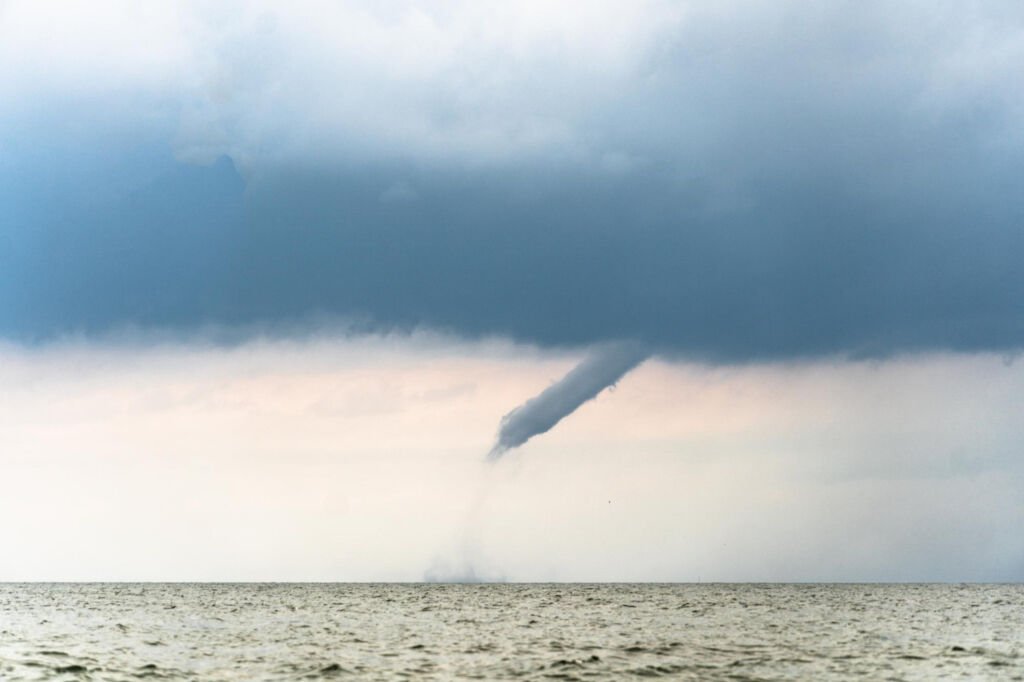
Stage 2: Birth of a Supercell
Not all rising air leads to a tornado. But in some cases, the rising warm air encounters strong winds blowing in different directions at different heights, a phenomenon known as wind shear. This wind shear causes the rising air to begin rotating horizontally. If this storm system continues to grow and strengthen, it can evolve into a supercell – the prime environment for the formation of tornadoes.
Stage 3: The Updraft and the Downdraft
Within a supercell, a powerful updraft, a rising column of air, forms. This updraft is like a giant engine, drawing warm, moist air at the storm’s base. As this air rises, it cools and condenses, forming the towering cumulonimbus clouds associated with severe thunderstorms.
Stage 4: The Intricacies of Rotation
The updraft within a supercell isn’t the only player in the game of tornado formation. As the updraft pulls air upwards, a downdraft, a column of cool, dry air, begins to sink within the storm. The interaction between this updraft and downdraft plays a crucial role. The downdraft can stretch and tilt the horizontally rotating air from the lower levels, intensifying its rotation and turning it vertical.
Stage 5: The Narrowing Funnel
Imagine a spinning ice skater pulling their arms in to spin faster. A similar principle applies in the later stages of tornado formation. As the downdraft stretches and intensifies the rotating air column, it narrows it. This creates a rapidly spinning, funnel-shaped vortex extending from the cloud base towards the ground.
Stage 6: Touchdown and Destruction
If the conditions are just right, the intense, narrow vortex of air can overcome the downdraft’s countervailing force and touch down on the ground. This marks the birth of a tornado, a swirling vortex of destruction capable of unleashing unimaginable power.
Characteristics of Tornadoes:
Tornadoes exhibit a wide range of intensity, size, and appearance.
Appearance: While variations exist, tornadoes often appear as a funnel-shaped cloud extending from the base of a thunderstorm. They can be transparent, filled with dust and debris, or obscured by heavy rain.
Pressure Conditions:
- Extreme Low Pressure: At the core of a tornado lies an area of incredibly low pressure. This is one of the key characteristics of tornadoes.
- Isobar Orientation: Isobars, lines connecting points of equal pressure, circle the tornado tightly, indicating a steep pressure gradient.
Pressure Gradient: The immense difference in pressure between the tornado’s core and the surrounding air creates a strong pressure gradient force. This force drives the high-speed inward rush of air towards the tornado’s center.
Wind Speed: Tornadoes are known for their extreme wind speeds. The strongest tornadoes can have winds exceeding 300 miles per hour, making them some of Earth’s most potent wind forces. This is a prime characteristic of tornadoes.
Temperature Variation: Temperature changes occur within and around a tornado. The temperature inside the tornado’s core may be slightly cooler than the surrounding air. Additionally, the downdraft in a supercell brings down cooler air, further contributing to temperature differences.
Cloud Conditions: Specific cloud formations often signal an environment conducive to tornadoes. Characteristics of tornadoes include:
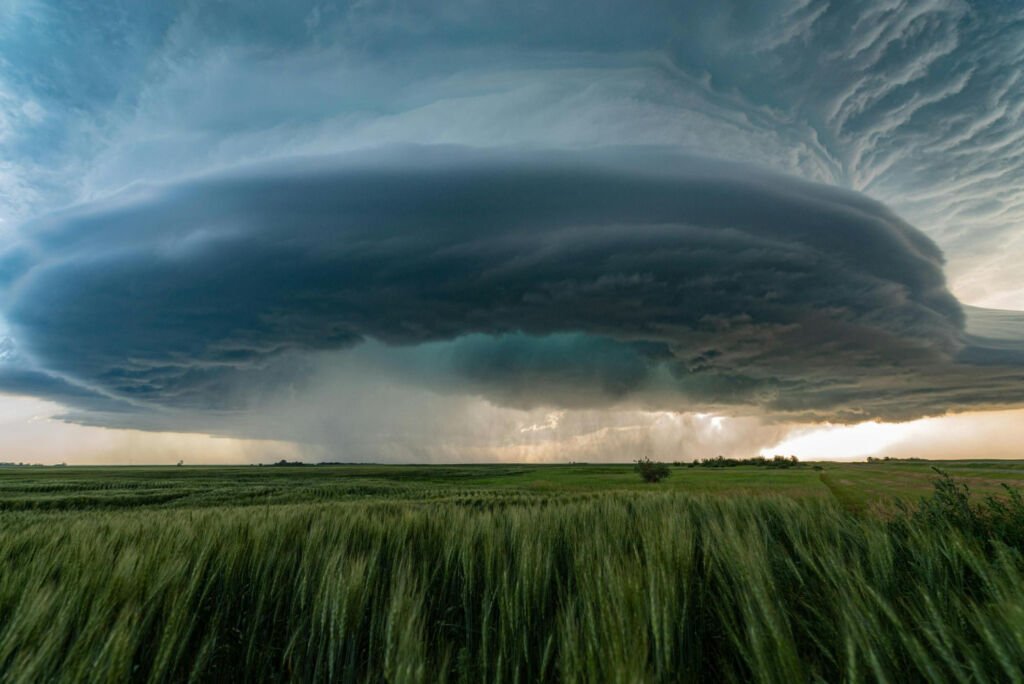
- Wall Cloud: A rotating cloud base lowering from a supercell thunderstorm could be a precursor to a tornado.
- Mammatus Clouds: While not always linked to tornadoes, these pouch-like cloud formations can form in the turbulent air around powerful storms.
Precipitation: Tornadoes are often accompanied by heavy precipitation and hail, characteristic of the severe thunderstorms from which they originate. However, the precipitation may obscure the tornado itself.
Anatomy of Tornadoes:
The anatomy of a tornado, while not always uniform, typically consists of a few key components:
- The Funnel Cloud: This visible, funnel-shaped condensation forms the tornado’s central column, extending from the thunderstorm.
- The Debris Cloud: This swirling mass of dust and objects, picked up by the tornado’s powerful winds, surrounds the funnel’s base.
- The Wall Cloud: This rotating, lowered section of a supercell thunderstorm’s base can precede tornado formation.
Tornado Alley and Other Tornado-Prone Regions:
While tornadoes can strike almost anywhere under the right conditions, certain regions across the globe are notorious for the high frequency of these destructive storms. Tornado hot spots can shift over time. Climate patterns and local weather phenomena influence tornado formation, meaning regions outside these primary zones can still face this destructive threat.
Tornado Alley (United States):
This region remains the global epicenter of tornado activity. Stretching across the Great Plains, including portions of Texas, Oklahoma, Kansas, Nebraska, and other states, unique geographical conditions create the perfect recipe for powerful storms.
Warm, moist air from the Gulf of Mexico often collides with colder, dry air from Canada or the Rocky Mountains, creating the instability and wind shear necessary for tornado development.
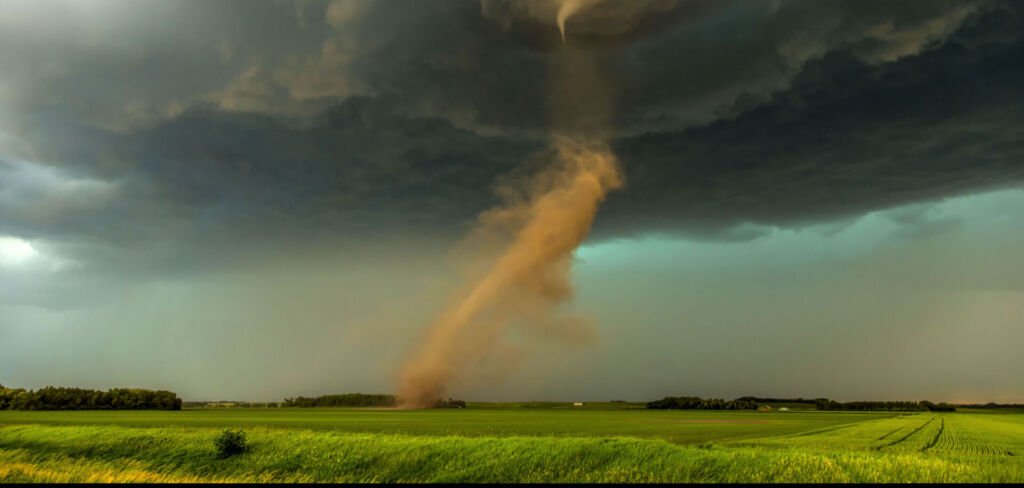
Other Regions with Notable Tornado Activity:
Canadian Prairies: Parts of southern Alberta, Saskatchewan, and Manitoba experience a significant number of tornadoes, particularly during the summer months.
Southeastern United States (“Dixie Alley”): States like Mississippi, Alabama, and Georgia are also susceptible to tornadoes, often outside the traditional spring tornado season.
Bangladesh: This densely populated country sadly has historically high tornado fatalities due to a combination of meteorological factors and building vulnerability.
South America (Argentina, Uruguay, Southern Brazil): Certain areas, particularly in central Argentina, experience vigorous tornado activity.
Europe: While less frequent than in the US, tornadoes occur across parts of Europe, with higher concentrations in countries like the UK, Germany, and Italy.
Different Names of Tornadoes:
- Tornado: The standard scientific term for a rotating column of air in contact with the ground and a cumulonimbus cloud.
- Waterspout: A tornado that forms over a body of water.
- Landspout: A weaker form of tornado often originating from non-supercell thunderstorms.
- Twister: A common nickname for a tornado, often used in the Great Plains of the United States.
- Cyclone: While technically referring to a broader range of rotating storms, this term is sometimes used as a colloquial synonym for a tornado, particularly in regions like South Asia.
- Whirlwind: A more general term for a rotating column of air, sometimes used interchangeably with “tornado,” though it can also refer to less destructive phenomena like dust devils.
- Dust Devil: While sometimes called “desert tornadoes,” dust devils are a distinct phenomenon. They are smaller, weaker, and not associated with thunderstorms.
Tornadoes - A Natural Disaster:
A natural disaster is a major adverse event resulting from Earth’s natural processes. These events can cause widespread damage, loss of life, and economic hardship.
Tornadoes squarely meet the criteria for a natural disaster due to their origin, unpredictability, destructive potential, fatalities and injuries caused, etc.
Structural Devastation
- Tornadoes can demolish homes, businesses, and other structures. Winds can rip off roofs, shatter windows, and even level entire buildings.
- Objects become dangerous projectiles due to the extreme wind speeds. Debris, like lumber, roofing material, and vehicles, can cause severe secondary damage and injuries.
- Power lines, communication towers, bridges, and other critical infrastructure are vulnerable to a tornado’s force.
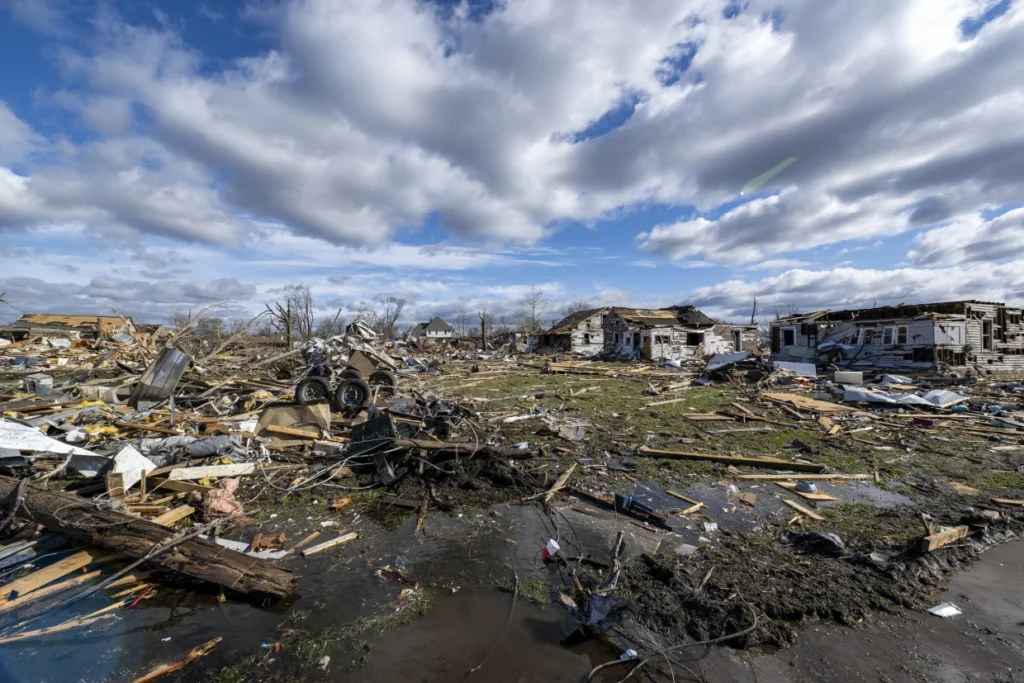
Loss of Life and Injuries
- Tragically, tornadoes are one of the leading causes of weather-related deaths. People can be struck by flying debris, trapped in collapsing structures, or swept away by the powerful winds.
- The chaotic nature of a tornado puts people at high risk of a wide array of injuries, ranging from cuts and lacerations to broken bones and severe trauma.
Environmental Impact
- Large trees can be snapped or uprooted, altering landscapes and damaging ecosystems.
- Agricultural fields can be ravaged by tornadoes, leading to economic losses and potential food shortages.
- Tornadoes churning through populated or industrial areas can release hazardous materials and spread debris over large distances.
Economic Disruption
- Deleting homes and businesses translates to billions of dollars in property damage annually.
- Damaged businesses can lead to layoffs and economic hardship within the affected community.
- Rebuilding in the aftermath of a tornado is incredibly costly, straining individuals, communities, and insurance carriers.
Psychological Impact
- Survivors of tornadoes often experience severe emotional distress and post-traumatic stress disorder (PTSD).
- Loss of homes can force families into prolonged periods of displacement, adding to the emotional and financial burden.
How to Protect from Tornadoes?
Tornado management encompasses the actions taken before, during, and after a tornado to minimize risk and mitigate its impact. It includes:
Preparedness
- Monitoring Weather Forecasts
- Develop a family emergency plan with a designated safe shelter location (basement, interior room without windows) and an emergency communication strategy.
- Prepare a kit with essential supplies like water, food, a first-aid kit, flashlights, and a battery-powered radio.
During a Tornado
- Seek shelter immediately in the basement or an interior room on the lowest level of your building.
- Crouch low to the ground, cover your head and neck and stay away from windows and exterior walls. If outdoors with no shelter nearby, lie flat in a ditch and cover your head.
- Monitor radio, TV, or NOAA weather radio for updates and instructions.
After a Tornado
- Exit your shelter cautiously. Beware of downed power lines, gas leaks, and damaged structures.
- Assist the Injured
- Assess Damage
- Begin the process of cleanup and rebuilding.
Conclusion:
With their swirling winds and destructive power, Tornadoes are a stark testament to nature’s unpredictable fury. Understanding their formation, from the interplay of atmospheric instability, wind shear, and supercell thunderstorms, is essential for developing early warning systems and preparedness strategies.
The characteristics of tornadoes – their extreme wind speeds, intense low pressure, and chaotic debris fields – underscore their potential for devastation. Images of toppled buildings, uprooted trees, and the scars they leave on landscapes serve as a sobering reminder of their destructive force.
While regions like Tornado Alley in the United States are particularly vulnerable, tornadoes can strike in many parts of the world. Knowing the names used for these storms, the regions most prone to their formation, and the critical elements of tornado management are crucial steps toward living alongside this natural threat.
By unraveling the mysteries behind the formation of tornadoes and heeding the lessons learned from their destructive impact, we can build more resilient communities and minimize the risks posed by these stunning yet terrifying forces of nature.

